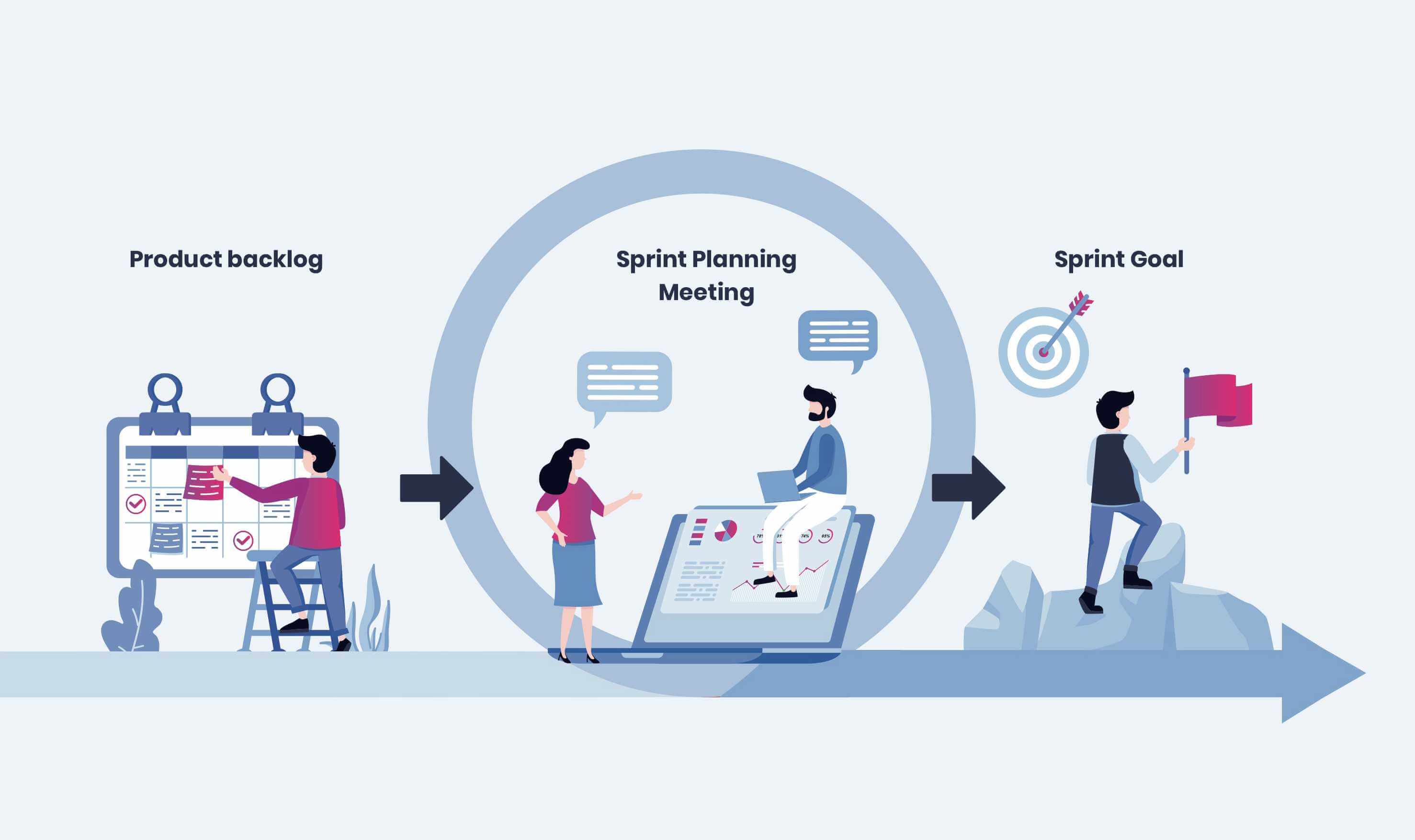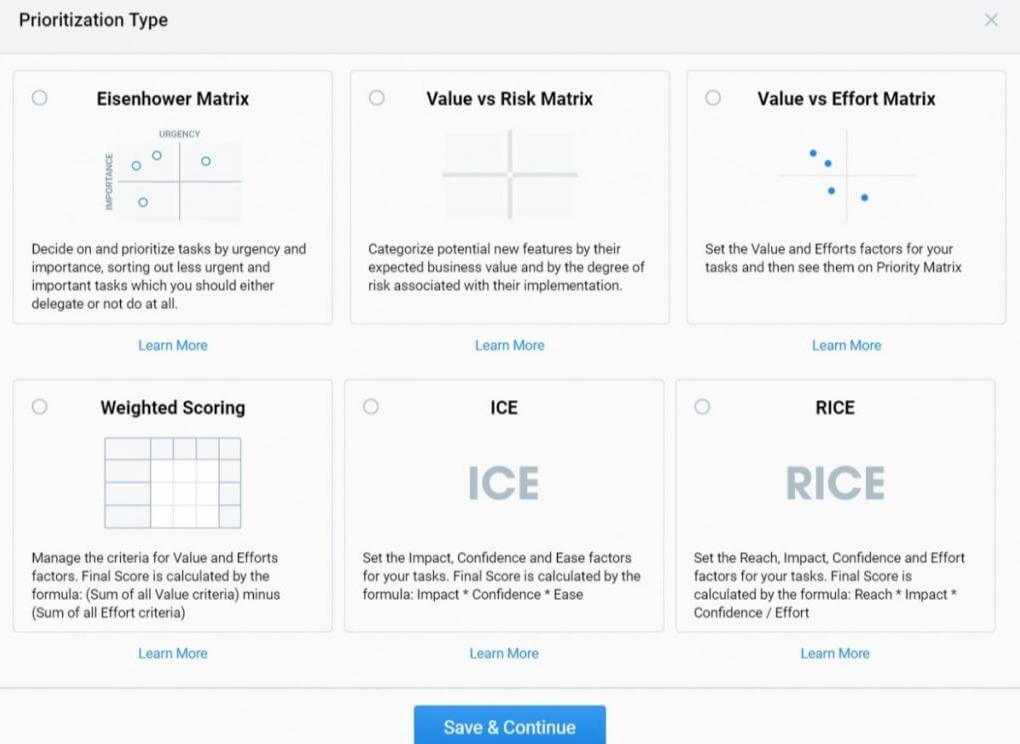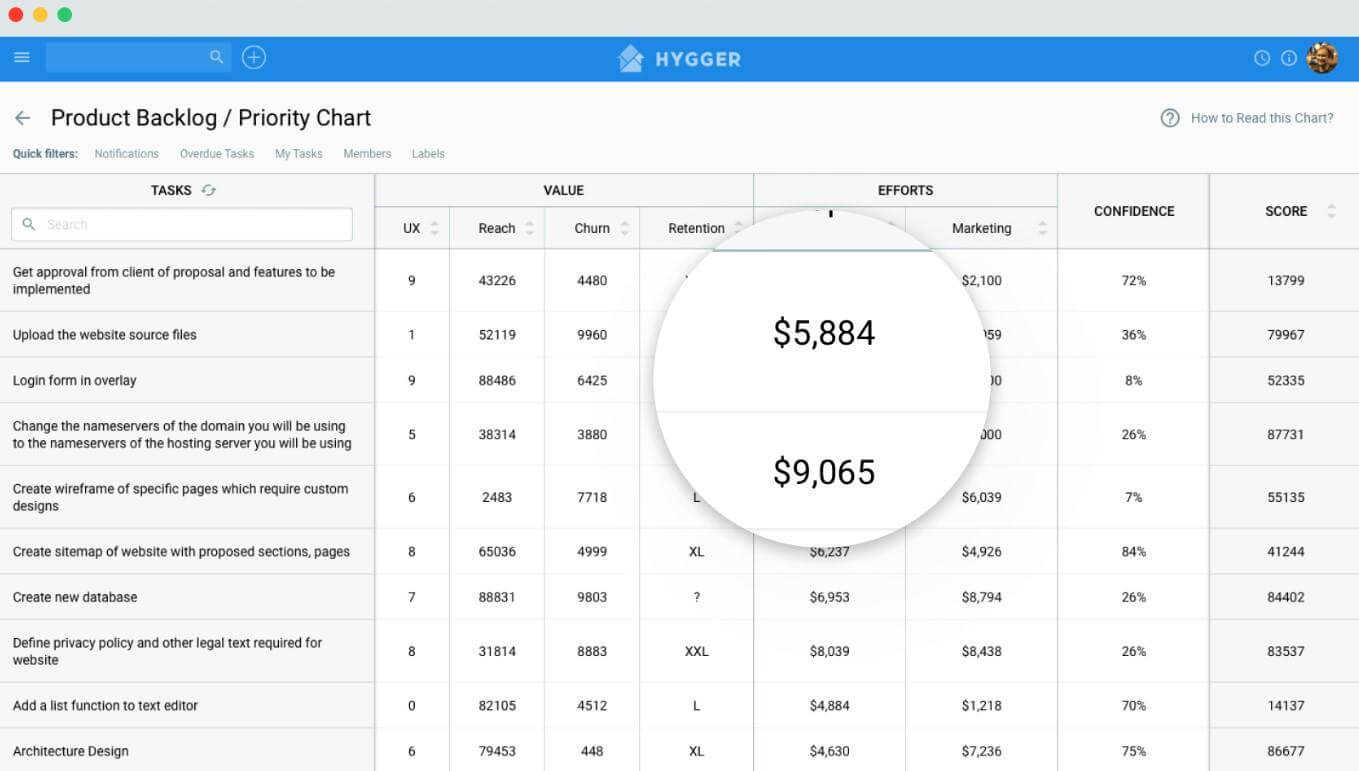How to Run a Proper Sprint Planning Meeting

A Sprint planning meeting is an event that is organized in a Scrum team before the start of each Sprint. Its main goal is to determine a proper plan and set the key Sprint goal.
Sprint planning is also about agreeing on the number of backlog items in the sprint that is crucial for the development team’s work. Seems easy.
However, this meeting is the basic thing and can both become the key to Sprint success, and cause harm to the project and the entire team. In order to conduct this meeting impeccably and effectively, you need to know some simple rules. This article is just about this.
What is Sprint planning
Sprint planning is one of the key Scrum ceremonies and Agile project management events. This meeting is the first in the line and it initiates all other events in Scrum.
During the sprint planning session, the agenda and focus are set.
- A good meeting creates an environment where the team is motivated and performs successfully.
- A bad one can derail the team by setting unrealistic expectations.
The planning meeting means that the product owner communicates the features with the highest priority to the entire team. They discuss all together which stories will be done in the Sprint. Sprint planning requires attending of the whole team, stakeholders may be also invited if the additional expertise on specific backlog items is needed.

A Spring planning Scrum session is the concept that includes the coverage of the following issues:
![]() What. The team decides what can be done in the coming sprint and the goal of the product owner is to describe the objective of the sprint and define backlog items that contribute to that goal.
What. The team decides what can be done in the coming sprint and the goal of the product owner is to describe the objective of the sprint and define backlog items that contribute to that goal.
![]() How. It is about planning the work necessary to deliver the sprint goal. The final sprint plan is the result of negotiations between developers and the product owner. This result should be based on value and effort.
How. It is about planning the work necessary to deliver the sprint goal. The final sprint plan is the result of negotiations between developers and the product owner. This result should be based on value and effort.
![]() Who. Agile Spring planning cannot be carried out without the participation of the product owner and the development team.
Who. Agile Spring planning cannot be carried out without the participation of the product owner and the development team.
- The PO defines the goal based on the value that they seek.
- The development team should attend the event to understand how they can or cannot deliver that goal.
![]() Inputs. This is about a product backlog that is a good starting point for any sprint plan. It provides a list of items that could potentially be part of the current sprint.
Inputs. This is about a product backlog that is a good starting point for any sprint plan. It provides a list of items that could potentially be part of the current sprint.
![]() Outputs. The most valuable outcome of the planning meeting is describing the goal of the sprint and how the team will start working toward that goal.
Outputs. The most valuable outcome of the planning meeting is describing the goal of the sprint and how the team will start working toward that goal.

Spring planning rules: set time limits
For Scrum Masters, who are responsible for Sprint planning meeting time frames, it is important to not drag out the time while running the meeting – it should be constrained no more than 2 hours.
If the team is satisfied with the meeting results before the timebox is finished, the event can be over.
Sprint planning agenda
Focus on outcomes, not the work. It’s quite easy to get bogged down in the work focusing on separate tasks during Sprint planning.
The actual goal of the sprint describes its objective at a high level, but the backlog Items can also be written with an outcome in mind. The user story is a great way to describe the work from a customer point of view.
Sprint planning: how does this actually happen?
Sprint planning meeting contains the following activities that involved, developers, testers and the entire team:
- Planning starts with the Product Owner’s goals introduction.
- Then the PO explains the big picture and vision.
- The whole team breaks down requirements into user stories, details the acceptance criteria and sizes them.
- High-level architecture design is being created.
- Then all team members define and choose necessary infrastructure items and tools for the release.
- The initial test strategy with the technical risks and initial risks analysis for different test levels is being created.
- With the help of the Scrum Master, the team determines appropriate metrics to track the progress.
- The final brainstorm and creating a big visible task board ends the process.
Key advantages of Sprint planning meetings
- Allows the team to collaboratively agree on the sprint goal and commitment
- Enables team members to discover tasks, prioritize and estimate them.
- Provides the ability to communicate dependencies and define the capacity to set and commit to an achievable sprint goal.
The new level of Spring planning
One of the factors that help to take Sprint planning to a qualitatively new level is prioritization. Setting priorities for ideas, tasks, features or requirements should be an essential part of any planning meeting.
Prioritization helps to determine what is most important and what is urgent. You may lose a lot of productive time scanning up and down your items that should be correctly prioritized. Luckily, there are professional approaches that allow teams to deal with the process of prioritization.
In this case, a professional project management tool with built-in prioritization can be a real solution.
For example, applying a simple Value vs Effort framework for prioritization, represented with a 2×2 matrix, you can simplify decision making and easily identify what is important or risky and where to direct more efforts.
This framework helps project managers and their teams to sort out all the items and put things in order.
Hygger.io visualizes this framework in the following way:

All you need is to compare the Value and Effort combination to prioritize your backlog items better and choose the most important ones.
- Value will show which business value the feature brings to the product
- Effort will measure the resources that are needed to complete the task
Other prioritization solutions for Sprint planning
If such a matrix does not fully satisfy your needs for prioritization, then you can try some other options and advanced scoring techniques:
- Value vs Risk matrix
- Eisenhower prioritization matrix
- ICE model
- RICE prioritization technique
- The Weighted scoring system

Using Hygger.io for planning your future Sprints, you get the following benefits:
- Plan Sprint goals that will be achieved within the Sprint through the implementation of the product backlog.

- Manage Sprint backlog. You can use a visual representation of a backlog board. With the help of powerful prioritization frameworks, you can easily optimize product priorities by defining important and less important tasks and also by scoring them correctly.
- Calculate commitment
- Determine velocity
- Determine capacity
Conclusion
The Scrum method solves complex problems that require learning by doing. The process of solving is not easy to plan, that’s why do not flatter yourself about creating an ideal plan. Focus on the outcome and get going. Sprint planning ends when its time-box expires or sooner if the goals are achieved.
Well-prepared Sprint planning does a lot of things well but most of all, it turns the goals from a wish into a step-by-step guide.



